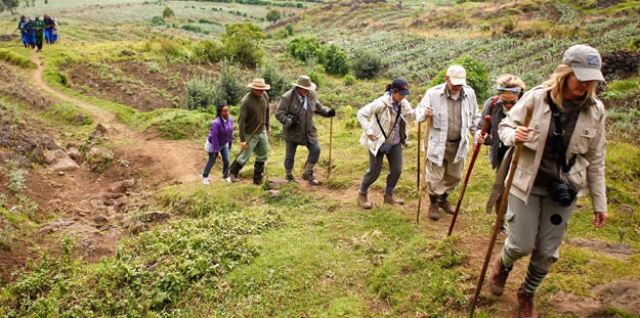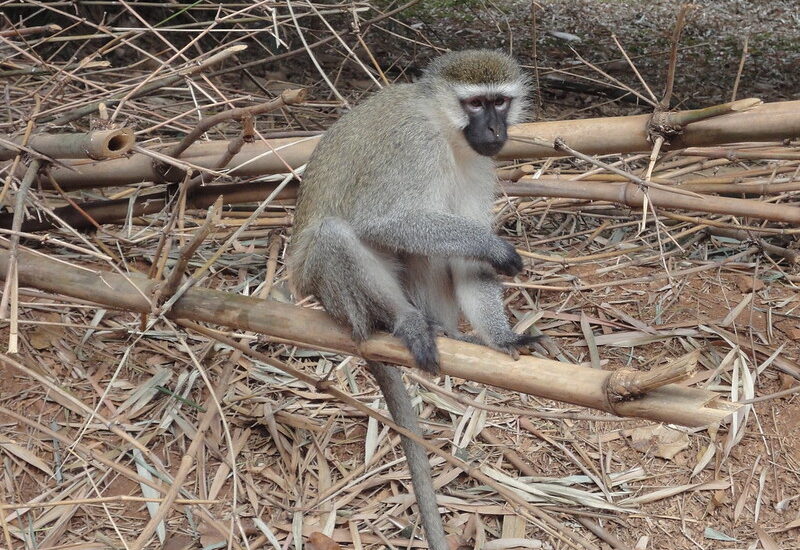Hidden deep within the misty rainforest of Bwindi Impenetrable National Park lies a world few…
Uganda’s Lakes And Rivers
How many lakes does Uganda have? Uganda is located in Africa’s Great Lakes area. Uganda’s topography is speckled with around 165 lakes, including freshwater lakes, crater lakes, and others. The following are some of Uganda’s main lakes (lakes and rivers), the bulk of which may be seen during a Uganda safari:
- Lake Bunyonyi in Southwestern Uganda
- Lake Mutanda in Southwestern Uganda
- Kabaka’s Lake in Central Uganda
- Lake Opeta in northern Uganda
- Lake Bisina/Lake Salisbury in Eastern Uganda
- Lake Mburo in Western Uganda
- Lake Victoria in Central Uganda
- Lake Kyoga in Central Uganda
- Lake Edward in Western Uganda
- Lake George in Western Uganda
- Lake Albert in Western Uganda
Several crater lakes in western Uganda including Lake Katwe, Lake Nyinambuga, Lake Saka, Ndali-Kasienda Crater Lakes, Lake Kyaninga, Lake Nkuruba, and Lake Nyabikere
Lake Victoria
Lake Victoria is one of the world’s most famous lakes. The massive tropical freshwater lake was located between the Great East African Rift Valley’s eastern and western arms.
The Lake was produced by filling a small basin caused by the down bending of rock strata on the East African plateau. Its coastlines are fringed with soft, lush meadows and accented by isolated inlets and caverns that tell volumes about its tranquil liquid charm.
What makes Lake Victoria unique?
Lake Victoria is also known as “Nnalubaale” in Luganda, which translates to “House of the Great Spirit.”
Explorer John Hanning Speke, the first European to view and describe Lake Victoria, named it after Queen Victoria of the United Kingdom. Speke did this while on an expedition with Richard Francis Burton to find the Nile’s source in 1858.
Despite the fact that Speke discovered Lake Victoria for Europeans, the lake is around 400,000 years old. Lake Victoria, on the other hand, is geologically young.
Lake Victoria is Africa’s biggest lake, with a surface area of 59,947 square kilometres (23,146 square miles).
The world’s biggest tropical lake and second-largest freshwater lake after Lake Superior in North America, however Lake Baikal in Siberia is greater in volume and depth.
In actuality, Lake Victoria is the world’s tenth-biggest continental lake in terms of volume, with around 2,424 km (582 miles) of water.
The lake’s longest length is around 359 km (223 miles), while its maximum width is approximately 337 km (209 miles).
Lake Victoria has an average depth of 41 metres (131 feet) and a maximum depth of 81 metres (266 feet).
Lake Victoria has a coastline length of around 7,142 km (4,438 mi) and a surface height of roughly 1,135 m (3,724 ft).
The area of Lake Victoria is shared by three East African countries:
Uganda’s share is 45%, or 31,000 km2 (12,000 square miles).
Tanzania accounts for 49% of the total area, approximately 33,700 km2 (13,000 square miles).
Kenya’s share is 6%, or 4,100 km2 (1600 square miles).
Among these three Lake Victoria bordering nations Uganda is undoubtedly the most notable. The Nile River, the world’s longest and most significant river, pours out of Lake Victoria in Uganda.
Over 3,000 islands may be found in Lake Victoria. The Ssese Islands are an excellent example. Ssese is an archipelago of 84 islands located in Uganda’s northern part of Lake Victoria.
Tourists interested in witnessing distinctive local beauty and Uganda culture can visit some of these islands, such as Buggala Island.
Lake Victoria fish species: Despite its relatively modest depth, the world of Lake Victoria fish is incredibly diverse and intriguing. The variety of fish in Lake Victoria is astoundingly large and diverse.
There are hundreds of colourful fish species in the Lake Victoria cichlid group alone, each with its own individual look and behaviour.
What should you do in Lake Victoria?
During your stay to Uganda, you may do a number of things around Lake Victoria, including:
Visit the Nile’s source at Jinja.
Fishing excursions in quest of massive Nile Perch
Relaxing at one of the several resorts
Chimpanzee and bird viewing on Ngamba Island
Honeymooning on several of Sesse Islands’ white sand beaches
Lake Bunyonyi
Lake Bunyonyi, which translates as “place of many little birds,” is one of Africa’s most beautiful lakes, located in southern Uganda.
Lake Bunyonyi has a surface size of 46 square kilometres and is thought to be Africa’s second-deepest lake at roughly 900 metres. This little lava-dammed lake is surrounded by 29 magnificent islets.
Bunyonyi is an ideal spot to unwind after your Uganda gorilla trekking because of its proximity to Bwindi Impenetrable National Park and Mgahinga National Park.
Lakes Edward and George
Edward and George Lakes, located on the river of the Great East African Rift, are also among the most beautiful in Uganda. Edward has an extended form and is (2325 square kilometres). It is shared between Uganda and the Democratic Republic of the Congo.
Lake George is smaller (250 square kilometres), shallow, and swamp-lined. The Kazinga Channel, a meandering silver strand that flows through Queen Elizabeth National Park, connects the two.
The Kazinga Channel that joins Lake Edward and George is claimed to house the world’s biggest population of hippos. It is a fantastic place to go for bird viewing. In fact, the Kazinga channel launch trip is regarded as one of the world’s best bird-watching excursions.
Uganda river systems
Uganda has how many rivers? Uganda has various rivers, and some of the important Uganda rivers are as follows:
- The Nile River
- River Achwa in the north
- Kidepo River in the north
- River Katonga in the west
- River Mpongo in the west
- Ishasha River in the west
- Kagera River in the south
- Nkusi River in the west
- Sipi River in Eastern
- River Okok in the north
- River Pager in the north
- River Kafu in the west
- Semliki River in the west
The Nile River
The Nile River is one of the world’s most recognised rivers and one of Africa’s natural marvels. Although all rivers are essential to the people and species that live nearby, the Nile looms big, both literally and metaphorically.
How long is the Nile River? The Nile River is the world’s longest river. According to Nile River statistics, it is 6,650 km long and originates in Jinja, Eastern Uganda, from Lake Victoria. The water from Lake Victoria flows out here on its way to the Mediterranean Sea.
Jinja, the Nile’s headwaters, is one of Africa’s most exciting adventure places. Activities to do at the Nile’s source in Jinja include the following.
Rafting on rapids
Kayaking
Bungee leaping
Boat Tours
Horseback Riding on the Nile Quad Biking Safaris on the Nile Mountain Cycling down the Nile Sportfishing
The drainage basin of the world’s longest river includes eleven countries: Uganda, Tanzania, Rwanda, Burundi, the Democratic Republic of the Congo, Kenya, Ethiopia, Eritrea, South Sudan, the Republic of Sudan, and Egypt.
Another fantastic method to get a closer look at the Nile is to take a Nile cruise to the bottom of the Murchison Falls. Murchison Falls is the World’s Most Powerful Waterfall and the most stunning thing to happen to the world’s longest river as it flows from Lake Victoria to the Mediterranean Sea.


